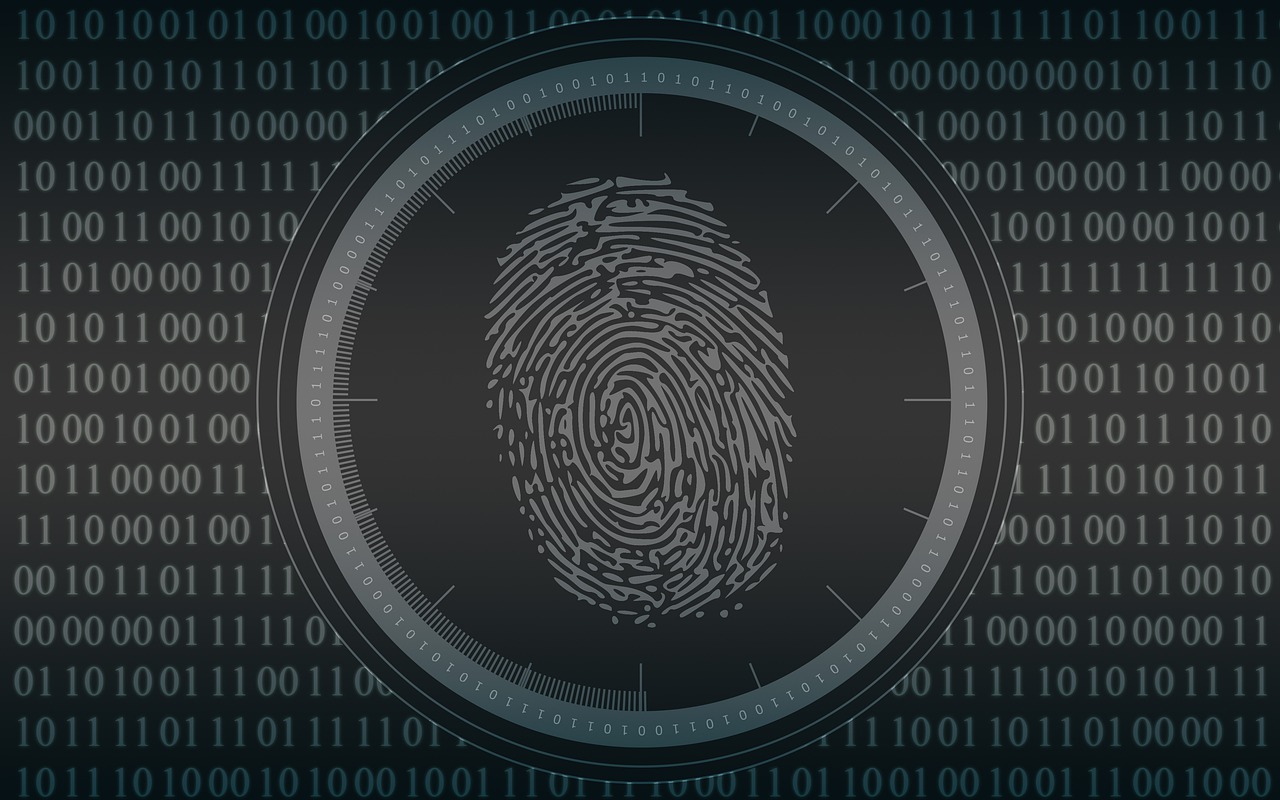Introduction
In our modern, interconnected world, where digital technology permeates every aspect of our lives, the need for robust cybersecurity measures is paramount. The rapid evolution of technology has opened up unprecedented opportunities for communication and accessibility, but it has also given rise to numerous cyber threats that can compromise our sensitive information, wreak havoc on our systems, and even disrupt entire organizations. This is where antivirus software and anti-malware tools come into play – as essential defenders against the ever-present digital dangers.
Brief overview of the importance of cybersecurity in today’s digital landscape
Today, virtually every individual and organization relies heavily on computers and other devices to store valuable data, conduct online transactions, communicate with others, and carry out various tasks efficiently. However, this increased reliance on technology has made us vulnerable to cybercriminals who seek to exploit vulnerabilities in our systems for their own malicious purposes.
From stealing personal information like credit card details or social security numbers to launching large-scale attacks that can paralyze entire networks or hold data hostage for ransom – the threats we face are diverse and ever-evolving. Moreover, with the advent of cloud computing, Internet of Things (IoT), and the proliferation of mobile devices, our vulnerabilities have multiplied exponentially.
Cybersecurity has become an integral part of individuals’ daily routines as well as a critical concern for businesses across industries. Without adequate protection mechanisms in place, we risk exposing ourselves to identity theft, financial losses, reputational damage or even more severe consequences like industrial espionage or national security breaches.
In this article series focused on understanding how antivirus software differs from anti-malware solutions – two primary pillars in cyber defense – we will delve into their intricacies to help you make informed decisions when safeguarding your digital realm. Let’s dive deeper into these essential tools that act as formidable shields against malicious actors lurking in cyberspace.
Understanding Antivirus Software
Definition and purpose of antivirus software
Antivirus software, often referred to simply as “antivirus,” is a crucial tool in the world of cybersecurity. Its primary purpose is to safeguard your computer system from malicious software, commonly known as computer viruses. These viruses are programs designed to replicate themselves and spread rapidly across devices, causing damage and disrupting normal operations.
Focus on detecting and eliminating computer viruses
Antivirus programs are specially designed to detect, prevent, and eliminate computer viruses. They employ various techniques to accomplish this task effectively.
When an antivirus software is installed on your device, it actively scans files and processes in real-time for any signs of known virus signatures or suspicious behavior. If a virus is detected, the antivirus software will promptly quarantine or remove the infected file, preventing further spread and potential harm.
Traditional signature-based detection method explained
One of the key methods used by antivirus software to identify viruses is through signature-based detection. This approach involves maintaining a database of known virus signatures or patterns that have been previously identified by security researchers. When an antivirus program scans a file or process, it compares its contents with these known signatures.
If there’s a match found, indicating the presence of a virus, the antivirus takes appropriate action. Signature-based detection relies on regularly updating these databases with new virus definitions released by security companies to keep up with evolving threats.
However, this method has its limitations; it may struggle when encountering new or unknown viruses that do not have matching signatures in their database yet – commonly referred to as zero-day threats. Nonetheless, despite this limitation, signature-based detection remains an essential component of most antivirus solutions due to its efficacy against well-established malware strains.
Exploring Anti-Malware Solutions
Definition and Scope of Anti-Malware Tools:
In the ever-evolving landscape of cybersecurity, anti-malware tools have emerged as a robust line of defense against a wide array of malicious software. Unlike antivirus software, which predominantly focuses on viruses, anti-malware takes a broader approach by encompassing various types of malware.
This includes notorious culprits such as worms, Trojans, adware, spyware, and other malicious entities that can wreak havoc on your digital realm. By broadening its scope beyond viruses alone, anti-malware solutions provide more comprehensive protection for your devices and sensitive information.
Broader Approach to Combating Various Types of Malware:
While viruses may be the most well-known form of malware, they are just one piece in the complex puzzle. Anti-malware tools adopt a holistic stance in combating the diverse range of threats lurking in cyberspace.
By addressing not only viruses but also worms, which replicate independently to spread across networks; Trojans that disguise themselves as legitimate programs to deceive users; adware that inundates you with unwanted advertisements; spyware that stealthily tracks your activities—anti—malware software ensures that you are protected from an extensive array of harmful programs. This comprehensive approach shields you from potential intrusions and maximizes your defense against the constantly evolving tactics employed by cybercriminals.
Behavior-Based Detection Techniques Employed by Anti-Malware Software:
In adapting to the ever-changing landscape of cyber threats, anti-malware solutions have embraced behavior-based detection techniques as a vital component in their arsenal. Traditional signature-based detection methods used by antivirus software rely on known patterns or signatures to identify threats.
However, cybercriminals are continuously tweaking their malware to evade detection. To counteract this, anti-malware software employs behavior analysis, which focuses on the actions and behaviors exhibited by files and programs rather than relying solely on predefined signatures.
By scrutinizing the behavior of potentially malicious entities, anti-malware tools can identify suspicious activities, flagging them as potential threats even if they have not been previously encountered. This proactive approach enhances your defense against emerging and unknown malware variants, providing an extra layer of protection for your digital ecosystem.
Key Differences between Antivirus and Anti-Malware
Scope: Antivirus focuses on viruses; anti-malware covers a wider range of threats
When it comes to the scope of protection, antivirus software and anti-malware tools differ significantly. Antivirus programs primarily focus on combating computer viruses – those pesky lines of malicious code that can replicate themselves and infect your files.
These viruses often spread through infected email attachments, downloads from untrusted websites, or even malicious USB drives. Antivirus software is equipped with a robust signature-based detection system that compares known virus signatures against files on your computer to identify any potential threats.
On the other hand, anti-malware solutions have a broader mission. They aim to protect your system from an array of malware types including not only viruses but also worms, Trojans, adware, spyware, and more.
These malicious entities can invade your device through various means such as phishing emails, drive-by downloads from compromised websites, or even malicious advertisements. Anti-malware tools adopt a multifaceted approach to safeguard against these diverse threats by employing advanced behavior analysis and heuristics algorithms.
Detection methods: Antivirus relies heavily on signature-based detection; anti-malware employs behavior analysis and heuristics as well
Detection methods are another distinctive aspect where antivirus software differs from anti-malware solutions. Traditionally, antivirus programs rely heavily on signature-based detection techniques. These tools maintain a large database of known virus signatures which are compared against files on your computer during scans or in real-time to flag any matches.
If a file’s signature matches that of a known virus in the database, the antivirus promptly takes action to remove or quarantine the file. In contrast, anti-malware systems employ not only signature-based detection but also behavior analysis and heuristics algorithms.
Behavior analysis involves monitoring the behavior of programs and processes on your device, looking for suspicious activities that could indicate malware presence. This proactive approach allows anti-malware tools to identify new or emerging threats that may not have a known signature yet.
Heuristics, on the other hand, involves analyzing the characteristics and structure of files to determine if they exhibit potentially malicious attributes. By combining these different detection methods, anti-malware tools offer a more advanced and comprehensive defense mechanism against evolving malware threats.
Real-time protection: Anti-malware often offers real-time monitoring for proactive defense; antivirus may lack this feature
Real-time protection is another factor that sets antivirus software apart from anti-malware solutions. While some antivirus programs do offer real-time scanning capabilities, it is more commonly associated with anti-malware tools.
Real-time monitoring constantly scans your system’s files and processes in the background as you use your device, providing active protection against potential threats before they can cause damage. This proactive defense mechanism is especially valuable when it comes to detecting and blocking emerging malware strains or zero-day attacks – those that exploit vulnerabilities before a patch or signature update is available.
With real-time protection enabled, anti-malware tools can swiftly intercept suspicious activities and prevent them from compromising your system. In contrast, antivirus software may primarily focus on manual scans or scheduled checks rather than continuous monitoring in real time, potentially leaving gaps in your system’s defense against new and unknown threats.
While both antivirus software and anti-malware solutions play crucial roles in safeguarding your digital world, their differences are noteworthy. While antivirus software primarily focuses on viruses with signature-based detection methods, anti-malware tools provide a broader range of protection against various types of malware using behavior analysis and heuristics alongside signatures.
Moreover, the inclusion of real-time monitoring in many anti-malware applications offers proactive defense against emerging threats – a feature that antivirus software may lack in some cases. To ensure comprehensive security, it is advisable to consider the specific needs of your digital environment and choose the right solution accordingly.
Pros and Cons of Antivirus Software
Advantages: Efficient at virus detection due to signature database; lighter system resource usage compared to some anti-malware solutions
When it comes to fighting viruses, antivirus software is the knight in shining armor. Armed with a vast signature database, these programs excel at detecting and eliminating known viruses. By comparing the code within files against their extensive library of virus signatures, antivirus software can swiftly identify malicious files and neutralize them before they wreak havoc on your system.
This reliable approach ensures that virus attacks are dealt with efficiently, providing a sense of security in an increasingly digital world. Another feather in the cap of antivirus software is its relatively light impact on system resources.
Unlike some robust anti-malware solutions that can put a strain on your computer’s performance, antivirus programs are designed to operate with minimal interference, keeping your device running smoothly even during scans or real-time protection. This lightweight nature makes them an ideal choice for users who value seamless multitasking without sacrificing protection.
However, it is essential to recognize that while antivirus software excels at combating viruses, its focus on this specific threat leaves it somewhat vulnerable when faced with other types of malware. The limitations become evident when dealing with non-virus threats like worms, Trojans, adware, spyware, and more.
Since these malicious entities often employ different attack vectors than traditional viruses, antivirus programs may struggle to detect and eliminate them effectively. Furthermore, when faced with zero-day attacks or unknown malware variants that have yet to be added to their signature database, even the most advanced antivirus solutions may find themselves inadequately prepared.
Limitations: Limited protection against non-virus threats; may struggle with zero-day attacks or unknown malware variants
While antivirus software is undoubtedly proficient in fighting viruses within its domain of expertise, it falls short when confronted with non-virus threats. These include various types of malware that may not rely on the same replication mechanisms or patterns as viruses do. Trojans, for example, disguise themselves as harmless files or software to trick users into executing them, making them a particularly challenging threat for antivirus programs to detect solely through signature-based methods.
Additionally, one of the significant limitations faced by antivirus software is its struggle with zero-day attacks and unknown malware variants. Zero-day attacks refer to vulnerabilities or weaknesses in software that are exploited by hackers before developers have a chance to create patches or updates to fix them.
Since these attacks occur rapidly and utilize previously undiscovered vulnerabilities, antivirus software relying heavily on signature databases may not possess the necessary information to identify and mitigate these threats effectively. Moreover, unknown malware variants that do not match any existing signatures pose a significant challenge for antivirus solutions.
Without prior knowledge about these newly emerging threats, it becomes increasingly difficult for antivirus programs to recognize and neutralize them in real-time. This limitation highlights the importance of complementing traditional antivirus protection with additional layers of defense provided by more comprehensive anti-malware tools.
While antivirus software demonstrates prowess in virus detection and carries a lighter system footprint compared to some anti-malware solutions, it does come with specific limitations. Its effectiveness against non-virus threats might be limited due to its focus on viruses specifically.
Additionally, when faced with zero-day attacks or unknown malware variants outside its signature database’s scope, even the most advanced antivirus software can struggle to provide adequate protection. Considering these pros and cons is crucial when selecting an appropriate cybersecurity solution tailored to your specific needs.
Pros and Cons of Anti-Malware Tools
Advantages: Comprehensive protection against various types of malware; behavior analysis helps detect new threats effectively
When it comes to safeguarding your digital fortress from the vast array of malicious software lurking in cyberspace, anti-malware tools emerge as the valiant knights in shining armor. These versatile guardians not only combat viruses but also tackle a wide range of other nefarious fiends like worms, Trojans, adware, spyware, and more.
With their comprehensive approach, anti-malware tools act as an all-around defense mechanism for your digital domains. One key advantage of anti-malware software lies in its employment of behavior analysis to detect new and emerging threats.
Traditional antivirus programs rely heavily on signature-based detection methods—an approach that involves comparing known virus signatures with suspicious files. In contrast, anti-malware solutions analyze the behavior of suspicious files or processes in real-time.
By monitoring their actions for any malicious intent or unusual behavior patterns, these tools can swiftly identify zero-day attacks or previously unseen malware variants that lack established signatures. Moreover, the flexibility and adaptability offered by anti-malware tools allow them to evolve alongside ever-evolving cyber threats.
With regular updates to their behavioral analysis algorithms and databases containing information about new threats, these tools stay one step ahead in the game of cat-and-mouse with cybercriminals. This dynamic approach ensures better protection against emerging threats that may elude traditional antivirus software.
Limitations: Can be resource-intensive; false positives may occur due to heuristic analysis
While anti-malware tools wield mighty swords against malicious software, they are not without a few chinks in their armor. One prominent limitation lies in their potential resource consumption. Due to their comprehensive nature and continuous real-time monitoring capabilities, some robust anti-malware solutions can be demanding on system resources.
This means they may require a higher amount of CPU power, memory, or disk space to effectively carry out their protective tasks. It’s essential to strike the right balance between security and system performance when selecting an anti-malware tool that suits your needs.
Another aspect to consider is the possibility of false positives when using anti-malware tools. As these tools employ heuristic analysis—a method that attempts to identify potentially malicious behavior—there is a slight risk of legitimate files or activities being flagged as suspicious or malicious incorrectly.
Although efforts are made by software developers to minimize false positives, occasional misidentifications may occur, leading to inconvenience and potential disruption for users. It’s important to remain vigilant and carefully review any flagged items before taking action, especially if they are critical system files or programs.
Despite these limitations, the advantages offered by anti-malware tools outweigh their drawbacks in most cases. With their ability to combat a wide spectrum of threats and adaptability to emerging dangers, these mighty defenders play a vital role in fortifying our digital realms against the ever-present forces of cyber malevolence.
Choosing the Right Solution for Your Needs
Considering your specific requirements
When it comes to choosing between antivirus software and anti-malware tools, it’s important to consider your specific needs and preferences. Assessing the level of protection you require, the type of threats you encounter most frequently, and the resources available on your system will help guide your decision-making process. If you primarily deal with viruses or want a lightweight solution that won’t put too much strain on your system, then antivirus software might be the right choice for you.
On the other hand, if you’re concerned about a wider range of threats beyond just viruses, such as spyware or adware, then opting for an anti-malware solution would be more appropriate. Additionally, if real-time monitoring is important to you for proactive defense against emerging threats, make sure to select an anti-malware tool that offers this feature.
Conclusion
In today’s digital landscape, where cyber threats lurk at every corner of the internet, protecting our devices and data becomes paramount. Understanding the differences between antivirus software and anti-malware tools is crucial in making an informed decision about which solution best suits our needs.
While antivirus software excels in detecting and eliminating computer viruses efficiently due to its reliance on signature-based detection methods and lower resource usage compared to some anti-malware solutions, it may fall short when it comes to safeguarding against non-virus threats or dealing with unknown malware variants. On the other hand, anti-malware tools offer a more comprehensive approach by targeting various types of malware through behavior analysis and heuristics.
This wider scope ensures better protection against evolving threats; however, these solutions can sometimes be resource-intensive and may generate false positives due to heuristic analysis. Ultimately, finding the right balance between functionality and performance is key when selecting cybersecurity solutions.
By considering your specific requirements and weighing the pros and cons of antivirus software versus anti-malware tools, you can make an educated choice that enhances your digital security. Stay informed, stay protected, and rest assured that with the right solution in place, you can surf the digital realm with confidence.
 Skip to main content
Skip to main content


